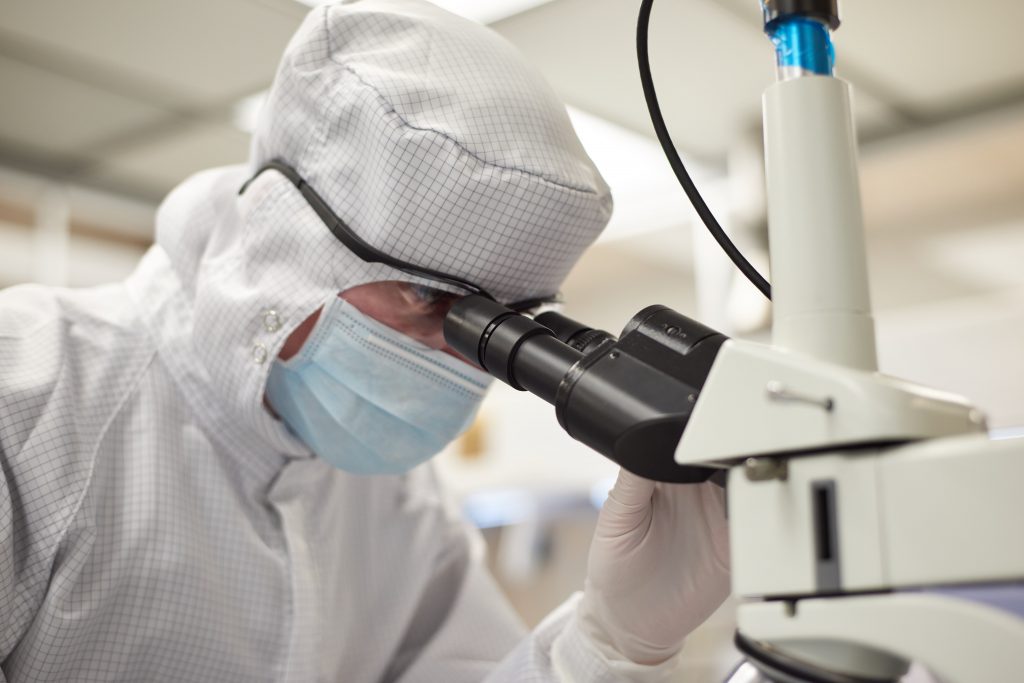Fresnel zone plates have become indispensable for focusing and imaging in both the soft X-ray (0.1–5 keV) and extreme ultraviolet (EUV, 10–120 eV) regimes. Traditional refractive lenses, made out of materials, such as glass, are transparent to X-rays, making focusing difficult. For EUV, most materials absorb too much light, also making it difficult to focus light. To overcome these challenges with refractive optics, zone plate optics use diffraction to focus light, opening up applications in X-Ray and EUV optics for nanoscale imaging.
How They Are Made

By patterning concentric opaque/transparent rings with radii defined by the Fresnel condition
rₙ = √(nλ f + (nλ)²/4)
each zone plate brings radiation of wavelength λ into constructive interference at a focal length f. Where zones switch from opaque to transparent at radii, rn, with n being the nth zone. For EUV and X-ray applications, Applied Nanotools offers binary and blazed zone plates with outermost zone widths down to 12 nm, enabling sub-20 nm focal spots with diffraction efficiencies of 10–30%. Many of the properties can be calculated to determine the efficiency of focusing with our online calculator at www.appliednt.com/zpcalc.

These optics are generally made using electron beam lithography, which allows patterning of structure to below 10 nm. As a direct-write process, rings are patterned in an polymer or other material, and electroplated with metals such as nickel, platinum or gold, or etched, like ruthenium, tungsten, or silicon nitride. By fabricating them on a thin membrane, X-rays or EUV light can pass through a substrate, with the zone plate focusing the X-ray light for imaging.

In spectromicroscopy—by tuning the wavelength (λ) across elemental absorption edges (e.g. Fe L₂,₃ at ∼710 eV or C K at 284 eV, for example), one obtains chemically‐specific maps with spatial resolution down to 20 nm. This approach underpins studies of magnetic domains via X-ray magnetic circular dichroism, trace element mapping in biological cells, and in situ catalysis experiments in fluid cells.
EUV mask inspection leverages zone plates to directly image reticle patterns at the operating wavelength of EUV lithography (∼13.5 nm). For example, actinic microscopes use zone plates for inspection of masks.
Outlook and Applications
Looking ahead, multilayer and stacked zone-plate architectures promise even higher efficiency and finer resolution. Blazed “phased” zone plates can redirect >40% of incident EUV into the focus. This is a new capability of Applied Nanotools, achieving >40% efficiency at 8 keV. As nanotomography, ptychography and table‐top HHG sources continue to mature, zone plates will remain important optics for pushing nanoscale imaging and spectroscopic studies across materials science, life sciences, and semiconductor metrology.
Applications include high-resolution imaging of materials and biological samples an fluorescence Microscopy, where zone plates are used for high-resolution imaging of small biological structures with fluorescence emissions. Work in battery research, using zone plates, has further improved battery technology, and will continue to provide improvements to that technology. There are thousands of applications where zone plate optics are used for imaging all types of samples at the nanoscale, which will lead to many new discoveries.